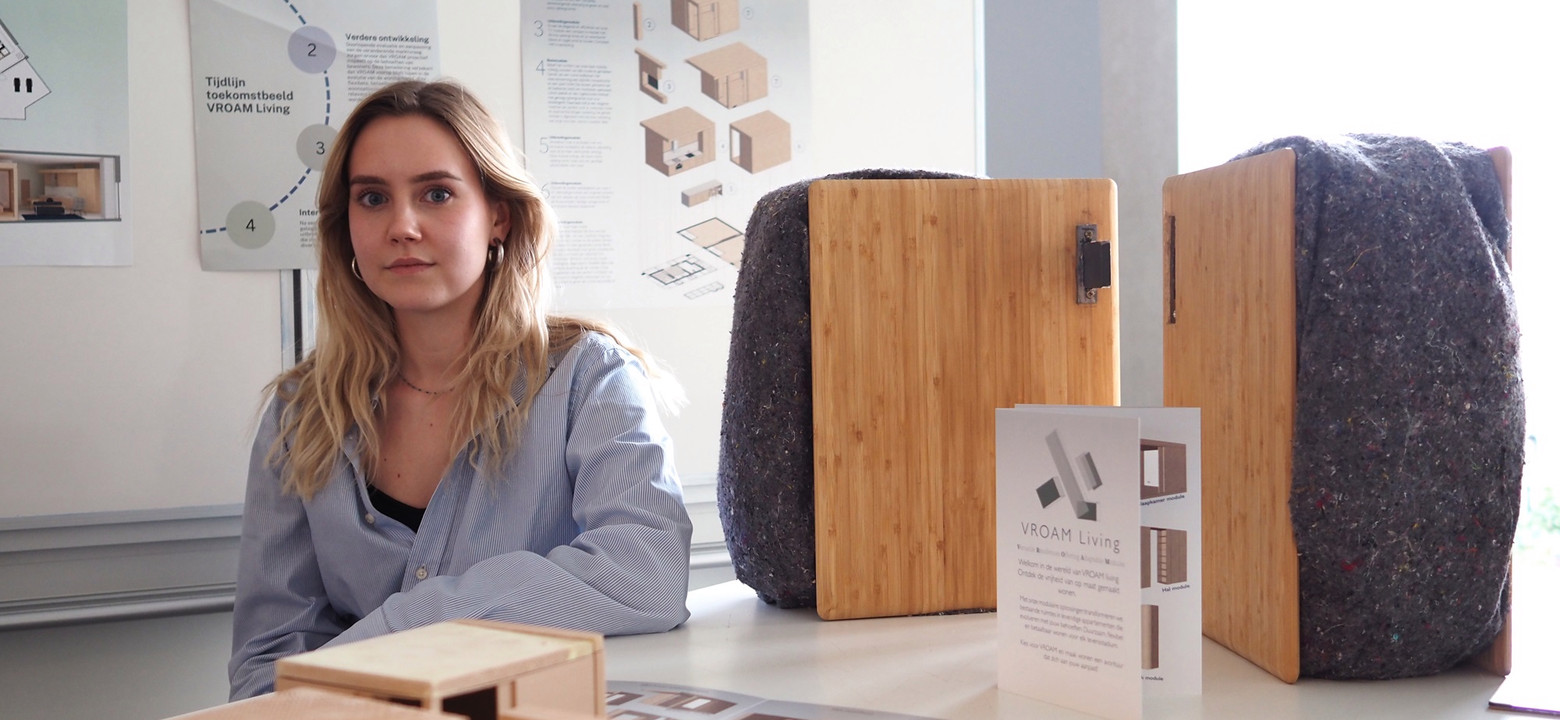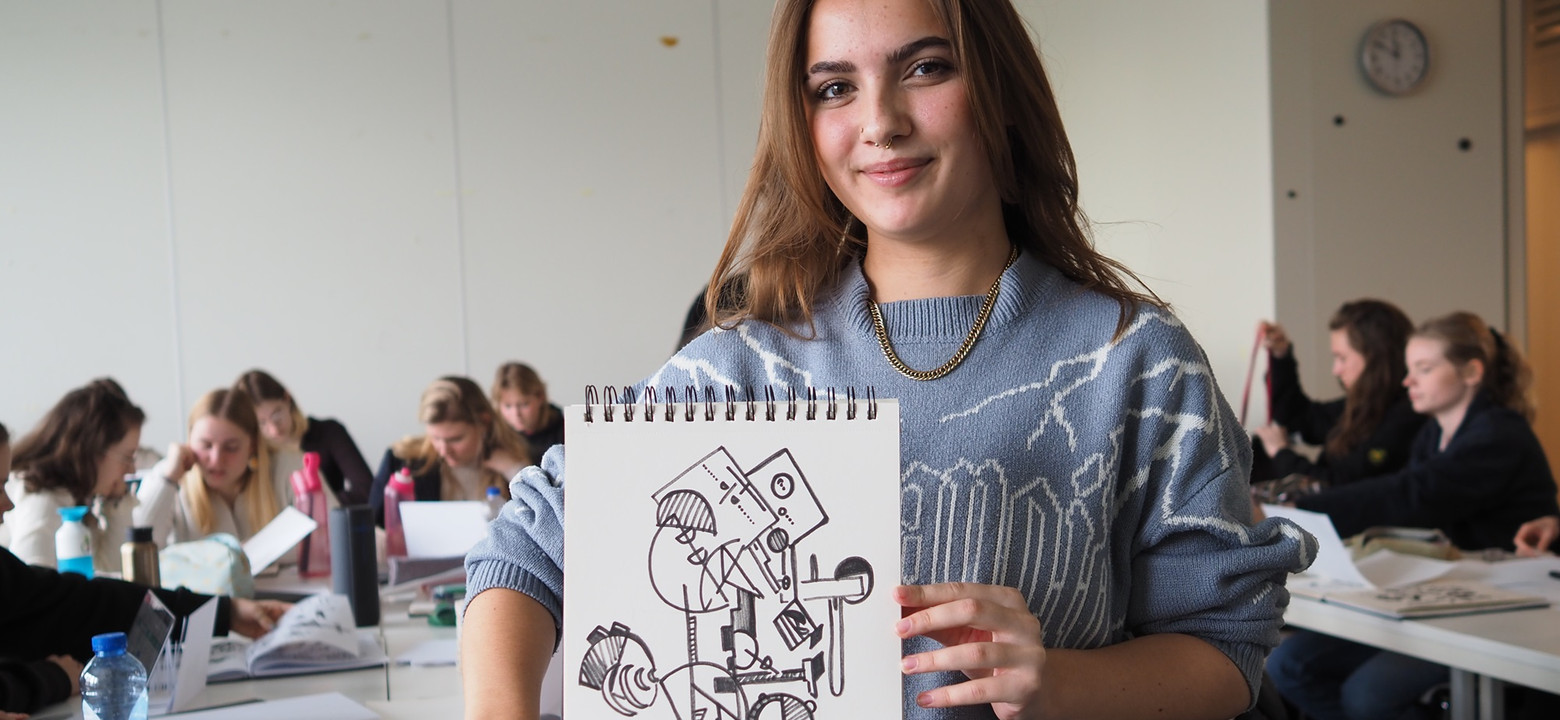Give heritage a new future with your interior design! (bilingual EN/NL)
- Degree
Exchange
- Start date
February, September
- Location
Deventer
- Duration
5 Months
Are you someone who immediately gets effervescent ideas when contemplating a beautiful old building, even if it is somewhat dilapidated? Then this minor is for you. Here you will get the chance to immerse yourself in the world of interior design and all the challenges involved in a real redevelopment assignment. In the minor Redesign Heritage, you will be challenged to breathe new life into an existing religious, industrial or cultural building. You will work for real clients who rely on your talent. In short: you will make a real impact on the world around you.
Interested? Join the online information session on Tue 9 Sept. at 19:00
Join the Teams meetingCourse Content
This minor takes you to the essence of places, buildings and objects steeped in history, memory and experience. Discover how you can use a careful approach to breathe new life into these valuable properties, dealing with their historical value, stakeholder perception and project feasibility from an interior design perspective.
During the minor, you will work on a multidisciplinary design assignment, bringing together students from different courses in architecture, building history and entrepreneurship. You have the freedom to add your own touches while working out your plan.
You regularly share your work-in-progress and get valuable feedback from your clients, fellow students and lecturers.
Together with a team of six to eight fellow students, you will be assigned a building with heritage value. The first weeks are devoted to joint research into the building, its surroundings and stakeholders. Based on the insights you gain from this research, you will individually draw up a programme of requirements, formulate your own (design) brief and elaborate on it.
The education in this minor is a mix of blended and integrated learning. Blended because classes are offered both physically and online: you are physically present on location for 4 blocks of 2 class hours, in addition you watch knowledge clips to deepen your knowledge prior to class, and the other days you work independently or with group colleagues on your design project. The education is integrated because this interior project covers various subject areas, such as art & culture, architectural knowledge, spatial design, entrepreneurship, user experience, technology, communication, presentation, applied design research and sustainable development goals. You will also make excursions to exemplary projects and inspiring places.
You, as a student, are in charge and have the opportunity to put together your own education by consulting experts in different fields. This minor offers you the opportunity to develop your skills, discover new perspectives and make a valuable contribution to the world of repurposing.
This exchange programme is open to bachelor students Archeologie, Architectural Design, Bouwkunde, Built Environment, Fashion Textile en Technology, Interior Architecture, Interior Design, Ruimtelijke Vormgeving, Spatial Design and Vastgoedkunde.
Are you studying a course which is not listed here? If so, please contact the lecturer first to ask for the possibilities.
There’s a twofold motivation for this minor. On the one hand, it stems from the needs of students and from recommendations from the audit panel to offer electives to IDS students. On the other hand, the content of the minor is in line with a major social task that is endorsed by the professional field.
Redesign Heritage is a current theme. Heritage is anything that has been created for a particular purpose and over time has acquired more values than its original purpose. This collective history is supported by the past and present meaning of the object. This communal value can be preserved by giving the object a new function and shape while keeping its historical value. The assignment in the minor Redesign Heritage is to value this past and to transform this value for the purpose of preserving the heritage for the future.
This minor is offered bilingually. The group of students is combined, and the attending lecturers speak both Dutch and English. Minor in Dutch.
At the end of the semester, your design and process will be assessed on summative criteria including research, collaboration, creativity, environmental awareness, reflection and communication. During the summative test, you present and justify a professional product, a well-founded design, in which you have tackled an issue or problem from professional practice.
In addition, there are formative Portfolio Checks where you present your work and receive feedback from fellow students. Here, you present (partial) products, evaluate the process, give feedback and receive feedback from your fellow students (peer feedback). You also make appointments to optimize your progress.
Want to know more about our fulltime Bachelor or Associate degree programmes?

Designing spaces that matter
The world around us is changing rapidly, and so are the spaces we live, work, and gather in. At Saxion, the Interior Design bachelor program equips you with the skills to design environments that respond to social challenges, promote sustainability, and foster well-being.
The Interior Design program at Saxion is more than just crafting beautiful spaces. It’s about designing spaces that serve a purpose, make a difference, and inspire communities.
During the four-year program, you will learn to:
- Respond to social challenges: Create designs that address issues such as inclusivity, mental health, and environmental sustainability.
- Think holistically: Balance aesthetics, functionality, and societal relevance.
- Innovate with technology: Use cutting-edge tools, like 3D modeling and smart materials, to bring your vision to life.
Key themes are:
- Sustainability: How to design interiors that minimize environmental impact.
- Societal impact: Creating spaces that foster connection and belonging.
- Human-centered business: Understanding the needs and emotions of the people who use the spaces you create and create spaces for them.
Graduates of the Interior Design program are equipped to make a difference in fields such as:
- Public space innovation: Transforming urban spaces to encourage social interaction.
- Healthcare design: Creating healing environments for hospitals or care facilities.
- Sustainable living solutions: Designing eco-friendly homes and workspaces.

Design beyond the surface
The Interior Brand Identity Associate degree (Ad) program is where creativity meets strategy. You will learn how to design spaces that reflect a brand’s identity while connecting with its target audience on an emotional and experiential level.
During the two-year program, you will learn to:
- Translate brand strategy into space: Understand the core values of a brand and incorporate them into design elements such as layout, color, materials, and lighting.
- Design targeted solutions: Create spaces that are specifically tailored to the needs of customers in retail, hospitality, or corporate environments.
- Craft immersive experiences: Leverage technology, storytelling, and interaction design to deliver unforgettable brand experiences.
Key themes are:
- Spatial branding: Design spaces that embody and enhance brand messaging.
- Customer-centric approach: Align design choices with the preferences and behaviors of target audiences.
- Innovative storytelling: Develop narratives that connect people to brands through thoughtful spatial design.
Graduates of the Interior Brand Identity program are in demand in industries such as:
- Retail design: Crafting flagship stores and concept spaces that boost customer engagement.
- Hospitality branding: Designing hotels and restaurants that align with a brand's story and customer expectations.
- Corporate identity spaces: Shaping offices and headquarters to reflect a company’s culture and mission.
Why Saxion Interior Design and Interior Brand Identity?
- International focus: A multicultural environment with students from all backgrounds.
- Real-world projects: Collaborate with companies on impactful design challenges.
- Innovative learning: Access to state-of-the-art facilities and design labs
Are you ready to shape the future of design?
More about the study structure
Would you like more information about the content, courses and tests of this program within the various years? Click on the button and view this training in the Saxion Course Catalog for detailed information.
Open Course Catalogue